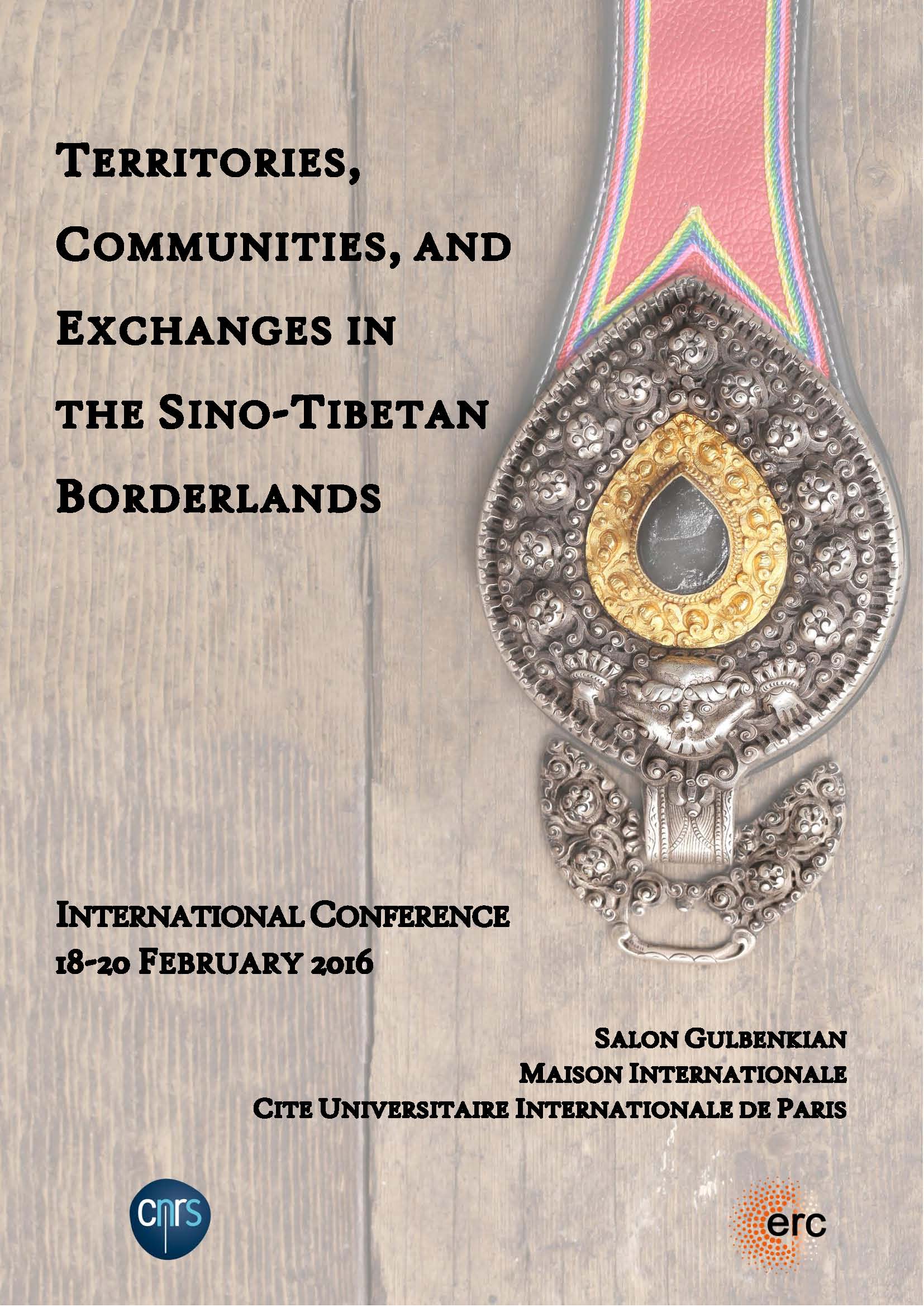Notice
Dáša Mortensen (University of North Carolina at Chapel Hill), " Wangchuk Tempa and the Control of Gyalthang in the Early-Twentieth Century "
- document 1 document 2 document 3
- niveau 1 niveau 2 niveau 3
Descriptif
This paper examines the fascinating life of Wangchuk Tempa 汪学鼎 (1886-1961), the de facto early-twentieth-century political and military leader of Gyalthang (rGyal Thang) in southern Kham, in order to illustrate the complex power dynamics at play in this frontier region. Wangchuk Tempa received monastic training at Ganden Sumtsenling Monastery in Gyalthang and at Sera Monastery in Lhasa, before leaving the monastic life in 1916. By the late 1920s he had recruited a well-armed militia to protect Gyalthang from roaming bandits and Chinese military incursions, and his militia fought against the Red Army when it came through Gyalthang in May, 1936. While many young Gyalthangpa were inspired by the Communist activists they met in Lijiang, Kunming, and Bathang in the late 1940s, and some ultimately joined the underground Communist Party, Wangchuk Tempa remained wary of the Communists’ intentions in Gyalthang. Even after the People’s Liberation Army officially “liberated” Gyalthang on May 10, 1950, Wangchuk Tempa continued to fight against the PLA and resist Communist rule in the area until 1952. A fierce defender of local autonomy, Wangchuk Tempa engaged in lengthy negotiations with Communist Party officials while traveling around China on political tours, before he eventually agreed to serve as Vice Governor of the newly established Diqing Tibetan Autonomous Prefecture in 1957. Chinese Communist Party accounts (wenshi ziliao) of the 1980s demonize Wangchuk Tempa as a “bandit leader” and “anti-revolutionary rebel,” while Gyalthangpa today often refer to his legendary exploits in laudatory and mythic terms. Wangchuk Tempa’s leadership in Gyalthang highlights the complex relationship between local, regional, and national politics. It also demonstrates the limited authority exercised by the government of the Dalai Lama, the Qing court, the Nationalist government, and the early Chinese Communist government in Gyalthang in the early- to mid-twentieth century.
International conference “Territories, Communities, and Exchanges in the Sino-Tibetan Kham Borderlands,” Februray 18-20, 2016. This conference is an outcome of a collaborative ERC-funded research project (Starting grant no. 283870).
For more information, please visit the project's Website: http://kham.cnrs.fr
Dans la même collection
-
Lucia Galli (University of Oxford), "The Price of Enlightenment: The Travel Account of Kha stag ʼDz…
Frontier territories characterised by intense socio-economic, political, and cultural inter-actions, in the mid-nineteenth century the easternmost fringes of the Tibetan plateau saw the rise of the
-
John Bray, "French Catholic Missions and Sino-Tibetan Trade: Local Networks and International Enter…
The Missions Étrangères de Paris (MEP) sent their first missionary on an exploratory mission to the Sino-Tibetan borderlands in 1847, and they retained a presence in the region until 1952. Together
-
C. Pat Giersch (Wellesley College), "Patterns of Inclusion and Exclusion Along Twentieth-Century Ch…
In recent years, increasingly sophisticated work has traced the remarkable changes in early twentieth-century state-building along China's southwestern and Tibetan borderlands. During this same period
-
Mark Frank, " Chinese Physiocracy: Kham as Laboratory for the Agrarian Theory of China "
When a nation-state looks to intensive agriculture for its national essence, what are the implications at the local level? This paper looks at agricultural colonization efforts (tunken屯垦) of the
-
Chen Bo (Sichuan University), “House Society” Revisited "
In this paper, I will begin by considering the concept of “house society” and its applicability to Southwest China. I ask the question of why no scholar, Levi-Strauss included since he originally
-
Eric Mortensen (Guilford College)," Boundaries of the Borderlands : Mapping Gyalthang"
This project seeks to discern the physical and conceptual boundaries of the Tibetan region of Gyalthang, in southern Kham. At issue are questions about the relationships between older
-
Fabienne Jagou, " Manchu Officials’ Khams Travel Accounts: Mapping a Course Through a Qing Territor…
Throughout the Qing dynasty (1644-1911), more and more travelers –officials, military and merchants- went to the Southwest border of China and dedicated some of their time to writing travel accounts,
-
Isabelle Henrion Dourcy (University of Laval), "Making Movies in the Gesar Heartland: The Burgeonin…
This conference is an outcome of the collaborative ERC-funded research project “Territories, Communities, and Exchanges in the Sino-Tibetan Kham Borderlands” This research project focuses on the
-
Stéphane Gros (Centre National de la Recherche Scientifique), "Matrifocality and the House in Drapa…
GrosStéphaneThe practice of a non-contractual, nonobligatory, and nonexclusive visiting sexual system among a matrilineal group in Southwest China has generated as much interest in anthropology as in the mass
-
Tenzin Jinba (National University of Singapore), " Two Gyalrong Weddings Under Fire: Rethinking of …
Two weddings in 2009 and 2015 respectively have received wide publicity among Tibetans and others within and out of China. The first was that of Lobsang Dundrup, a renowned singer from Gyalrong, and
-
Katia Buffetrille (Ecole Pratique des Hautes Etudes), " The Increasing Visibility of the Borderland…
For centuries, Central Tibet and its capital Lhasa were regarded as the center—as is obviously expressed in the very name of the region in Tibetan, dBus, “Center”—of political and religious life in
-
Scott Relyea (Hamline University), " Settling Authority: Sichuanese Farmers in Early Twentieth Cent…
From 1907 to 1911, some 4,000 commoners from the Sichuan Basin ventured west. Enticed by promises of large tracts of uncultivated land and three years of free rent, seeds, animals, and farm implements













